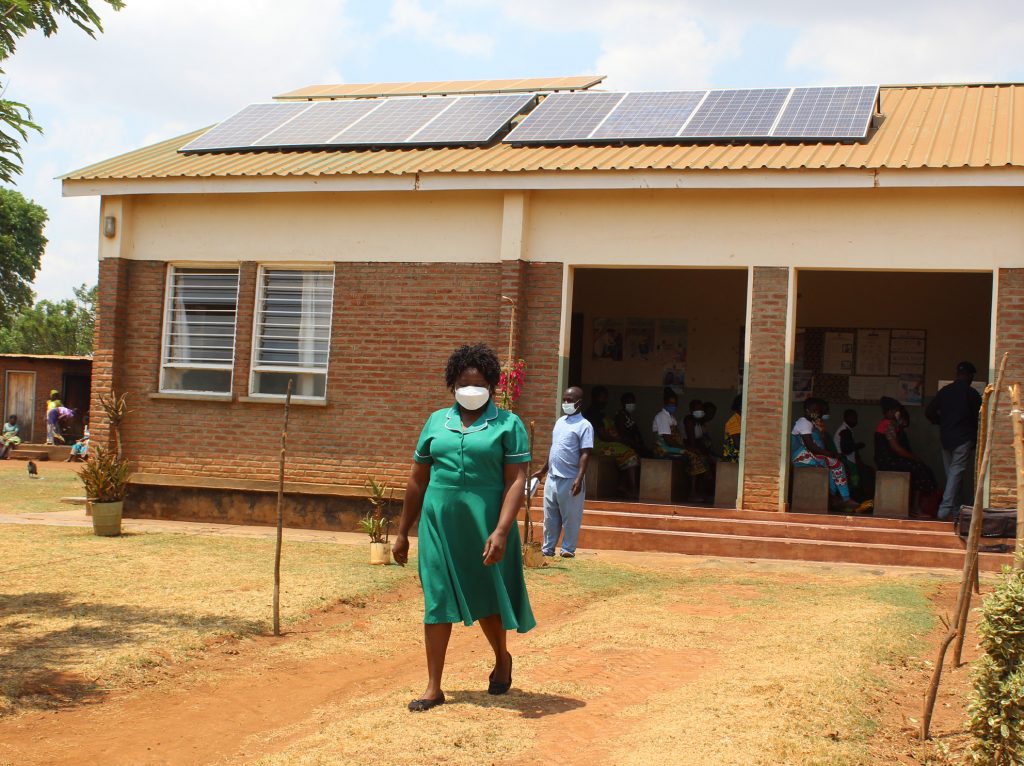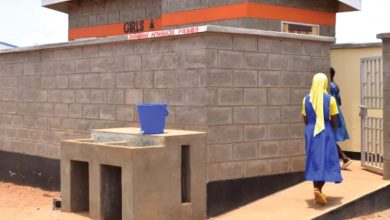Solar power for safe births
When Esther Chilongo arrived at Mseche Health Centre in Dowa nine years ago, she was shocked that the hospital had no electricity and women were giving birth under yellowish torchlight.
Ironically, electricity distribution lines pass in the backyard of the health facility, with a pole standing just behind a maternity ward.

“Things had to change,” she says. “It wasn’t to assist women deliver safely in the night without adequate lighting.”
Today, the busy health centre, which serves a population of 21 500 from Dowa and Lilongwe districts, is powered by solar energy.
This comes in response to Chilongo’s midnight SOS to Community Energy Malawi (CEM) on July 21 when two women were due to deliver dangerously in the dark.
She recalls: “It was around 11pm when I made a video call to CEM country director Edgar Bayani, showing him the dark labour ward where the two were due to give birth.
“I requested him to consider installing a solar power system here because we want every pregnant woman to deliver safely, but that isn’t possible without electricity in the labour ward.”
Bayani was so touched by the video from the understaffed facility served by two nurses and no clinician that he forwarded it to CEM partners at Community Energy Scotland and the Scottish Government.
After the transatlantic conversations, they came to the aid of the rural facility, which delivers 15 babies a week. The roof of the health centre, opened in 2013 by Daeyang Luke, is draped with glistening solar panels that noiselessly turn sunlight into electricity for powering the maternity wing and other services, including cooling vaccines.
CEM switched on solar power on October 6, a memorable night immortalised by the birth of four babies, including twins.
“It was fantastic news that after years of complaints, we had safe delivery conducted in bright lights. That is what the nurse-cum-midwife wanted when she made the desperate video call in the night,” Bayani states.
After the call, CEM promptly deployed technicians on a fact-finding mission that led Mseche to become the sixth health centre powered by solar energy under a £80 000 Scottish-funded project to electrify five Covid-19 treatment centres. The five include St John of God in Mzuzu, Mzambazi in Mzimba, Nkhamenya in Kasungu, Chisankhwa in Chitipa and Atupele at Kasantha in Karonga.
“We had a budget of five facilities under the Resillient Power Systems for Health project, but looking at the problem and how our meagre resources could change the lives of women and health workers here, we were compelled to help.”
Now women in labour are no longer required to carry torches and buy dry cells to avoid the possibility of delivering in the dark.
This shows the power of renewable energy, especially solar, to transform service delivery in rural health centres, which serve at least four in every five people in Malawi.
The rural majority is widely excluded from national power supply, with just four percent of them connected to the national grid since Escom rolled out Malawi Rural Electrification Programme in 1980.
This represents a rural electrification pace of one percent per decade. At this pace, only five percent of the rural population will be connected by the close of the decade—the 2030 deadline of global sustainable development goal to ensure everyone has access to reliable and affordable clean energy.
Chrissy Dzoole, from Yeliko Village in the vicinity of Mseche Health Centre, says this is too slow for rural communities where health facilities are few and far apart.
Before Deyang Luke constructed the facility in her community, the mother of four and her neighbours used to walk at least 16km to access health services at Chiwamba health centre. Others travelled 18km to Lumbadzi or 25km to Chankhungu.
“The arrival of this health centre was meant to end the long travels, but women still walk long and spend their meagre earnings on these trips and hospital stays because our facility is not connected by Escom,” she states.
A dozen years ago, Dzoole delivered her firstborn son Fanwell at Lumbadzi Health Centre, a nearly 20km trip which takes five hours on foot and costs K2 000 on a motorcycle.
Her second-born daughter Aliness, 9, was born at Maseche. In 2017, she birthed twins—Beatrice and Bright—at Mseche, but in a darkroom dimly lit up by a small torch when electricity poles could be seen from the windows of the labour ward.
She states: “The coming of solar power is a huge relief to women who know the hardship we had to face.
“We were constantly at the risk of dying from birth complications that couldn’t be seen under torchlight. My second born was born in a semi-dark room and I feared for my life and hers.”
She reckons the country’s push for safe motherhood will remain fragile without providing electricity to excluded rural health facilities where health workers order women in labour to bring torches and dry cells for safe delivery.
Such expenses, coupled with costly hospital trips and stays, plunge them into financial hardship amid national policies to ensure everyone gets the health services they need without being exposed to worse poverty and long trips.
Excited with the transformation, Chilongo states: “Delivery is a matter of life and death; If not well-managed, you can lose a life or both to severe loss of blood.
“Darkness worsens the pain and risk of dying while giving birth. Solar power has made our work easier.”




